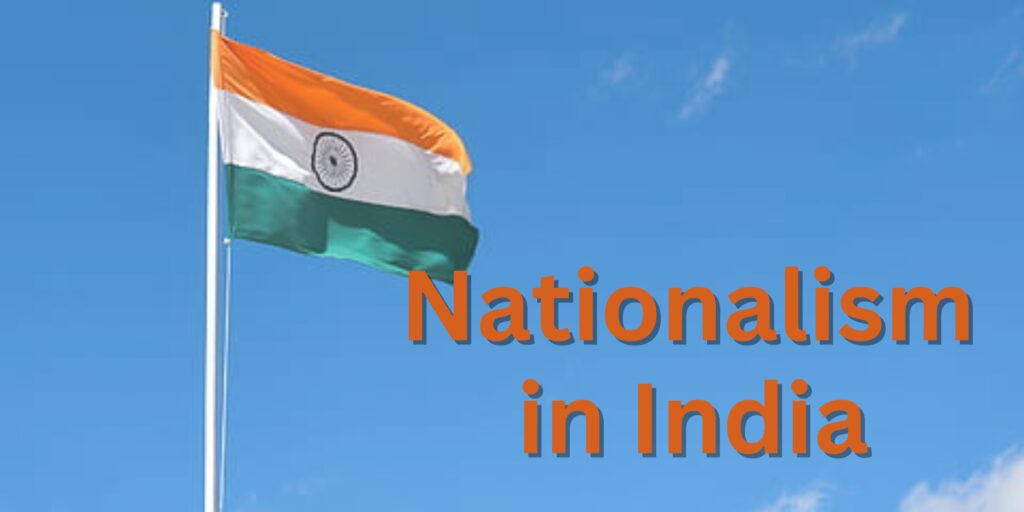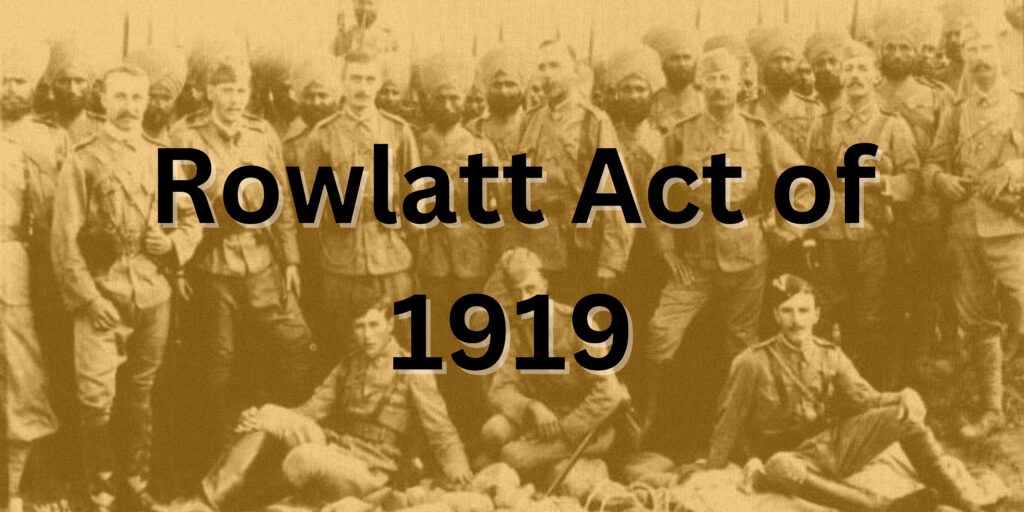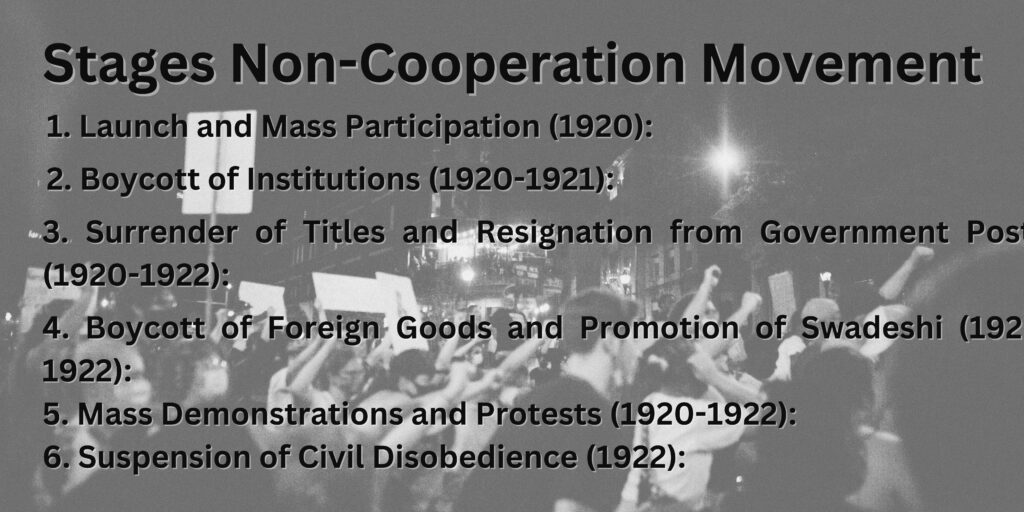Tag: nationalism in india class 10 history
Nationalism in India Class 10 NCERT History Chapter 2 Notes
Nationalism in India Class 10: The article delves into Congress’ efforts to foster the national movement. It also include the diverse participation of social groups, and the profound impact of nationalism on people’s minds. The outbreak of the First World War in 1919 had global ramifications, fueling India’s struggle for independence. This event ignited the spirit of nationalism, and the Non-Cooperation Movement, pivotal elements in India’s fight for freedom.
Nationalism stands as the largest mass movement of modern times, uniting millions across classes and ideologies in political action. This result in ultimately leading to the downfall of the colonial empire. If you’re seeking Nationalism in India class 10 notes, we’ve covered all the significant aspects here. Keep reading to explore further!
Visit history of class 10th for all chapter’s solution.
Nationalism in India Class 10 Notes

Class 10’s “Nationalism in India” chapter explores how a sense of common belonging fosters nationalism. It explores how their struggles bind them together, fostering a shared identity. The chapter also examines nationalism in various parts of the world, including Germany, France, Britain, Vietnam, India, and more. Below are the comprehensive notes on Nationalism in India Class 10 for your reference:
Nationalism in India Class 10 Notes
World War 1 (1914 -1918)
World War 1, had a profound impact on the world, and India was no exception. While India was a colony under British rule during this period, its involvement in the war was significant. The war brought forth numerous changes and challenges for the Indian subcontinent, shaping its political, social, and economic landscape.
As a part of the British Empire, India was automatically drawn into World War 1. The British government utilized Indian resources, manpower, and finances to support the war effort. Around 1.5 million Indian soldiers were recruited to serve on various battlefronts across the globe, making it the largest voluntary army of that time.
![]()
Indian soldiers exhibited tremendous bravery and dedication, playing a vital role in several major battles, including the Battle of Neuve Chapelle, Battle of Ypres, and the Mesopotamian campaign. Their sacrifices were significant, with over 74,000 Indian soldiers losing their lives and many more injured.
The war also had a significant impact on the home front in India. The British government imposed heavy taxes and requisitioned resources, leading to economic hardships and food shortages. Additionally, the war heightened political consciousness among Indians, and demands for self-rule and independence intensified.
India’s involvement in World War 1 became a turning point in the Indian nationalist movement. The war’s promise of democracy and self-determination for all nations highlighted the hypocrisy of British colonial rule. This led to the emergence of more assertive demands for independence and galvanized leaders like Mahatma Gandhi, who initiated nonviolent movements to demand self-rule.
The aftermath of World War 1 had a lasting impact on India’s political landscape. The disillusionment with British promises of self-determination fueled the demand for complete independence, leading to the Non-Cooperation Movement and the Civil Disobedience Movement in the subsequent years.
Satyagraha
As per the NCERT 10th class history book, Satyagraha is derived from the words “Satya” (truth) and “Agraha” (holding on to truth). Mahatma Gandhi launched three regional Satyagrahas, as follows:

1. Champaran: In 1916, Gandhi initiated the first Satyagraha in Champaran, Bihar, encouraging people to protest against the oppressive teenkathiya system (plantation system).
2. Kheda: In 1917, Gandhi organized a Satyagraha in the Kheda district of Gujarat, supporting poor peasants demanding relief from high revenue collection.
3. Ahmedabad: In 1918, a Satyagraha was organized for cotton mill workers in Ahmedabad.
Gandhi Ji based these movements on two principles: truth and non-violence. He believed that pure intentions could render force unnecessary in Satyagraha. Being a practitioner of non-violence, he emphasized that truth and non-violence (Dharma) were potent tools to win any battle. Throughout India’s nationalist struggle, Gandhi upheld this Dharma, as detailed in the 10th class history books.
Rowlatt Act of 1919
Following the regional Satyagrahas, Gandhi decided to launch a nationwide movement. However, in response, the Imperial legislative council passed the Rowlatt Act in 1919, granting the British significant power to suppress political activities and detain political prisoners without trial for two years.

In retaliation, Gandhi initiated a hartal (strike) on 6th April, marking the beginning of India’s workers’ national movement. This led to widespread disruptions, with closed shops, disrupted railways, and telegraph lines. In certain areas, martial law was imposed, and local leaders were arrested, while Gandhi himself was barred from entering Delhi.
On 13th April, during the Baisakhi festival in Amritsar, unaware of martial law, a gathering of people witnessed a tragic incident. General Dyer opened fire upon them, resulting in a large number of casualties to instill fear and awe. This dark episode is etched in the history of India’s nationalist movement.
As mentioned in the chapter “Nationalism in India Class 10,” Gandhi staunchly upheld non-violence. In response to the Jallianwala Bagh massacre, he immediately called off the hartal, adhering to his principles of peaceful resistance.
Nationalism in India Class 10 Notes
Non Cooperation and Khilafat
According to the Nationalism in India Class 10 Notes, The Non-Cooperation Movement was launched by Mahatma Gandhi in 1920. It was a nationwide campaign aimed at resisting British rule through nonviolent means.
The movement called for Indians to boycott British institutions, schools, colleges, courts, and civil services, and to withdraw support from the British government. People were urged to adopt swadeshi (buying Indian-made goods) and spin their own cloth using the charkha (spinning wheel) to promote self-reliance.
The Non-Cooperation Movement saw widespread participation from people across different sections of society. It marked a turning point in India’s freedom struggle and brought millions of Indians together in a collective effort for independence.
However, the movement was called off in 1922 after a violent incident at Chauri Chaura, where protestors clashed with police, leading to casualties. Mahatma Gandhi believed that nonviolence was the essence of the movement, and he called it off to avoid further escalation of violence.
Non-Cooperation Movement in Stages
The Non-Cooperation Movement, launched by Mahatma Gandhi in 1920, unfolded in several stages, each marked by distinct activities and events. Here are the key stages of the Non-Cooperation Movement:

1. Launch and Mass Participation (1920):
The Non-Cooperation Movement was officially launched on August 1, 1920, during the special session of the Indian National Congress in Calcutta (now Kolkata). Mahatma Gandhi called for nonviolent non-cooperation with the British government as a means to resist colonial rule. The movement aimed to unite people from all sections of society in a nonviolent struggle for independence.
2. Boycott of Institutions (1920-1921):
During the initial phase, Indians were urged to boycott British institutions, including schools, colleges, and law courts. Lawyers and students withdrew from these institutions, leading to a significant impact on the British administration.
3. Surrender of Titles and Resignation from Government Posts (1920-1922):
Many Indians, especially leaders and government officials, resigned from their posts and returned their titles to the British government. This act symbolized their rejection of British authority and demonstrated their commitment to the cause of independence.
4. Boycott of Foreign Goods and Promotion of Swadeshi (1920-1922):
The Non-Cooperation Movement encouraged Indians to boycott foreign goods and promote the use of swadeshi (Indian-made) products. People began spinning their own cloth using the charkha and boycotted British-manufactured textiles, leading to a surge in the use of Indian textiles.
5. Mass Demonstrations and Protests (1920-1922):
Throughout the movement, mass demonstrations, processions, and public meetings were held across India. These gatherings became platforms for expressing discontent against British rule and demanding self-governance.
6. Suspension of Civil Disobedience (1922):
In 1922, the Non-Cooperation Movement took an unfortunate turn when violent clashes occurred in Chauri Chaura, Uttar Pradesh. A mob attacked a police station, resulting in the death of several police officers. Mahatma Gandhi, who always emphasized nonviolence, was deeply disappointed by the incident. In response, he suspended the movement, believing that nonviolence was essential for its success.
The Non-Cooperation Movement was a pivotal phase in India’s freedom struggle, bringing millions of people together in a nonviolent resistance against British rule. While it was suspended in 1922, its impact continued to inspire future movements, leading India closer to achieving independence in 1947.
Civil Disobedience Movement
In the Nationalism in India Class 10, a significant milestone highlighted is the Civil Disobedience Movement, characterized by the following key features:
1. Advancement from Non-Cooperation: The movement went beyond Non-Cooperation, urging people not only to abstain from cooperation but also to defy colonial laws.
2. Boycott of Foreign Cloth and Picketing of Liquor Shops: People actively boycotted foreign cloth and engaged in picketing liquor shops as acts of protest.
3. Peasants’ Refusal to Pay Revenue and Chowkidar Taxes: Peasants were encouraged to resist paying revenue and chowkidar taxes as a form of civil disobedience.
4. Refusal to Attend English Medium Schools, Colleges, Offices, and Courts: Students, village officials, and lawyers were urged not to attend English medium institutions and colonial offices and courts.
The Civil Disobedience Movement marked a bold step in the struggle for India’s independence, as people engaged in nonviolent resistance and non-cooperation with oppressive colonial laws and institutions.
Beginning of Civil Disobedience
In 1930, Gandhiji initiated the Dandi march to protest against the monopoly rights on salt manufacturing. Together with his supporters, he openly defied the salt law by making salt themselves. This marked the beginning of a civil disobedience movement, aiming to mobilize people from all backgrounds and classes to unite against the oppressive rule of the British Government. The Dandi march became a significant event among other national movements in India.
However, in the present, we observe threats to our society’s framework from negative elements seeking to divide our nation along lines of caste, creed, religion, and class. As responsible citizens, it becomes our duty to safeguard the hard-fought freedom and unity of our nation.
Participants in the Civil Disobedience Movement
The civil disobedience movement witnessed the active involvement of various social groups expressing their discontent with colonial policies. Rich peasant communities joined to combat high revenue policies, while the Indian business classes reacted against restrictive colonial regulations on their businesses. However, the poor peasant and industrial working classes did not participate in significant numbers. One notable aspect of the movement was the remarkable participation of women in picketing and protests, highlighting their crucial role in the struggle for independence.
Limits of the Civil Disobedience Movement
The impact of the civil disobedience movement was relatively limited. Dalits showed minimal participation in the movement, as they focused on seeking political empowerment through increased representation and demanded separate electorates. B.R. Ambedkar led this movement, culminating in the Poona Pact of 1932, despite opposition from Gandhi.
Muslim communities also felt somewhat disconnected from the movement, particularly after the Khilafat movement lost its significance. The apprehension of potential Hindu dominance played a significant role in the minority Muslim communities’ reluctance to respond actively to the movement.
Salt March
The Salt March, also known as the Dandi March, was a significant event during India’s struggle for independence from British colonial rule. It was a nonviolent protest led by Mahatma Gandhi in 1930 to oppose the British-imposed salt tax, which heavily burdened the Indian population and symbolized British economic exploitation.
The Salt March began on March 12, 1930, when Mahatma Gandhi, along with 78 volunteers, embarked on a 240-mile journey from his ashram in Sabarmati, Gujarat, to the coastal town of Dandi. The march lasted for 24 days, covering about 10 miles per day. Thousands of people joined Gandhi along the way, making it a powerful mass movement.
During the march, the participants followed strict principles of nonviolence and civil disobedience. They picked up salt along the seashore, openly defying the British salt laws, which granted the British a monopoly on salt production and taxed the production and sale of salt.
The Salt March garnered widespread attention and support from Indians across the country. It inspired people to boycott British salt and produce their own salt, marking a symbol of defiance against British authority and economic exploitation. This act of civil disobedience demonstrated the power of nonviolent resistance and the unity of the Indian masses in their quest for independence.
The Salt March, along with other civil disobedience movements, put immense pressure on the British government and led to negotiations with Mahatma Gandhi. Ultimately, it played a crucial role in shaping India’s freedom struggle and strengthening the nationalist movement. The Salt March remains a remarkable example of the effectiveness of nonviolent resistance and Gandhi’s leadership in India’s journey towards independence.
Gandhi Irwin Pact
To address the escalating tensions and widespread unrest, Mahatma Gandhi and Lord Irwin engaged in negotiations. The talks culminated in the Gandhi-Irwin Pact, which had the following key provisions:
- Suspension of Civil Disobedience: Gandhi agreed to suspend the Civil Disobedience Movement, calling off the mass protests and non-cooperation activities.
- Participation in Round Table Conference: As part of the pact, the British government agreed to invite Indian representatives to attend the Second Round Table Conference in London. The conference aimed to discuss constitutional reforms and the future of India’s political structure.
- Release of Political Prisoners: In return for suspending the movement, the British government agreed to release political prisoners who were arrested during the Civil Disobedience Movement.
The signing of the Gandhi-Irwin Pact marked a temporary truce between the Indian National Congress, led by Gandhi, and the British government. It provided an opportunity for negotiations and discussions on India’s future political setup. However, the Round Table Conferences did not lead to substantial outcomes, as there were disagreements between the Indian leaders and the British authorities.
Despite the temporary setback in achieving complete independence, the Gandhi-Irwin Pact played a crucial role in providing a platform for discussions and raising international awareness about India’s struggle for freedom. It highlighted Gandhi’s commitment to nonviolence and peaceful negotiations in the pursuit of India’s independence. The pact also paved the way for future negotiations and agreements that ultimately led to India’s independence in 1947.
Development of a Sense of Collective Belonging
The development of a sense of collective belonging played a crucial role in the growth of nationalism. Various cultural processes, including the use of symbols, folklore, and Indian history, contributed to spreading ideas of nationalism. However, some aspects, such as the glorification of a Hindu past, alienated people from other communities.
Read Also:
- The Making of A Global World Notes: NCERT Hist. Class 10 Ch. 3
- Print Culture and The Modern World
- Notes of The Rise of Nationalism in Europe
- The Age of Industrialisation
Frequently Asked Questions – FAQ
Q 1. What is nationalism in India explain in detail?
Nationalism in India evolved as a powerful force during the struggle for independence against British colonial rule. Factors such as historical context, socio-religious reforms, education, print media, and visionary leaders contributed to its development.
The Indian National Congress advocated for representation, while the Swadeshi Movement promoted Indian goods. Mahatma Gandhi led the Non-Cooperation and Civil Disobedience Movements. Post-independence, challenges included national consolidation and development.
India’s nationalism upholds principles of unity in diversity, promoting social and economic progress. Rooted in peace, tolerance, and global cooperation, Indian nationalism reflects a collective journey toward freedom, dignity, and a pluralistic future.
Q 2. What was the reason for nationalism in India?
Nationalism in India emerged as a response to British colonial rule, fueled by oppressive policies and economic exploitation. India’s rich cultural heritage and historical unity fostered a sense of common identity and pride.
Socio-religious reform movements, access to education, and print media further strengthened nationalist sentiments. Political organizations like the Indian National Congress provided platforms for demanding self-rule.
Influenced by global nationalist movements, India’s visionary leaders, including Mahatma Gandhi, Jawaharlal Nehru, and Subhash Chandra Bose, united people in their pursuit of independence, ultimately leading to India’s liberation in 1947.
Q 3. What is the main cause of nationalism?
Nationalism stems from a shared identity and pride within a distinct community or nation. Causes include historical unity, cultural revival, oppression, and common struggles.
External domination or colonization can trigger a desire for sovereignty. Efforts to preserve cultural traditions strengthen national identity. Political representation demands and economic disparities may drive nationalist movements.
Modern media spread nationalist ideas. Defined geographical boundaries contribute to territorial identity. Visionary leaders play a key role in inspiring nationalist goals. Nationalism arises from historical, cultural, socio-economic, and political factors that strengthen a sense of shared identity and aspiration for a unified nation.